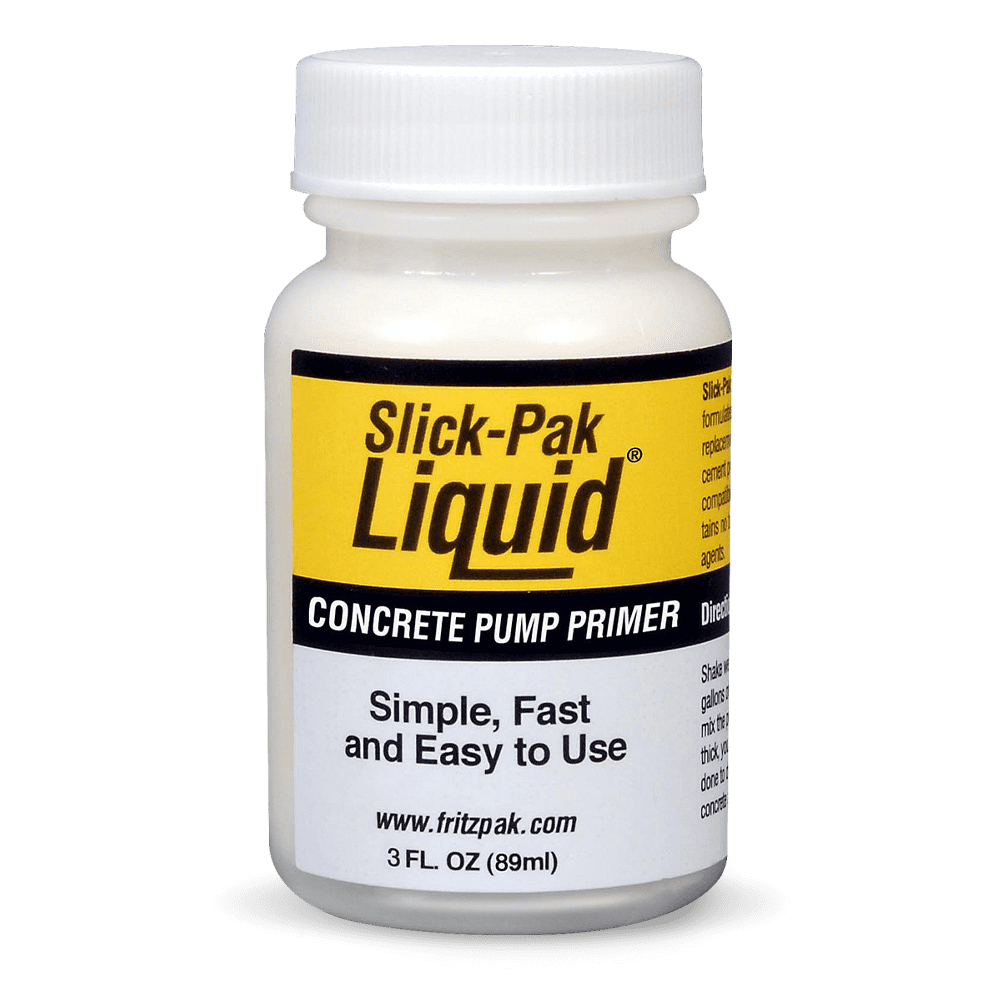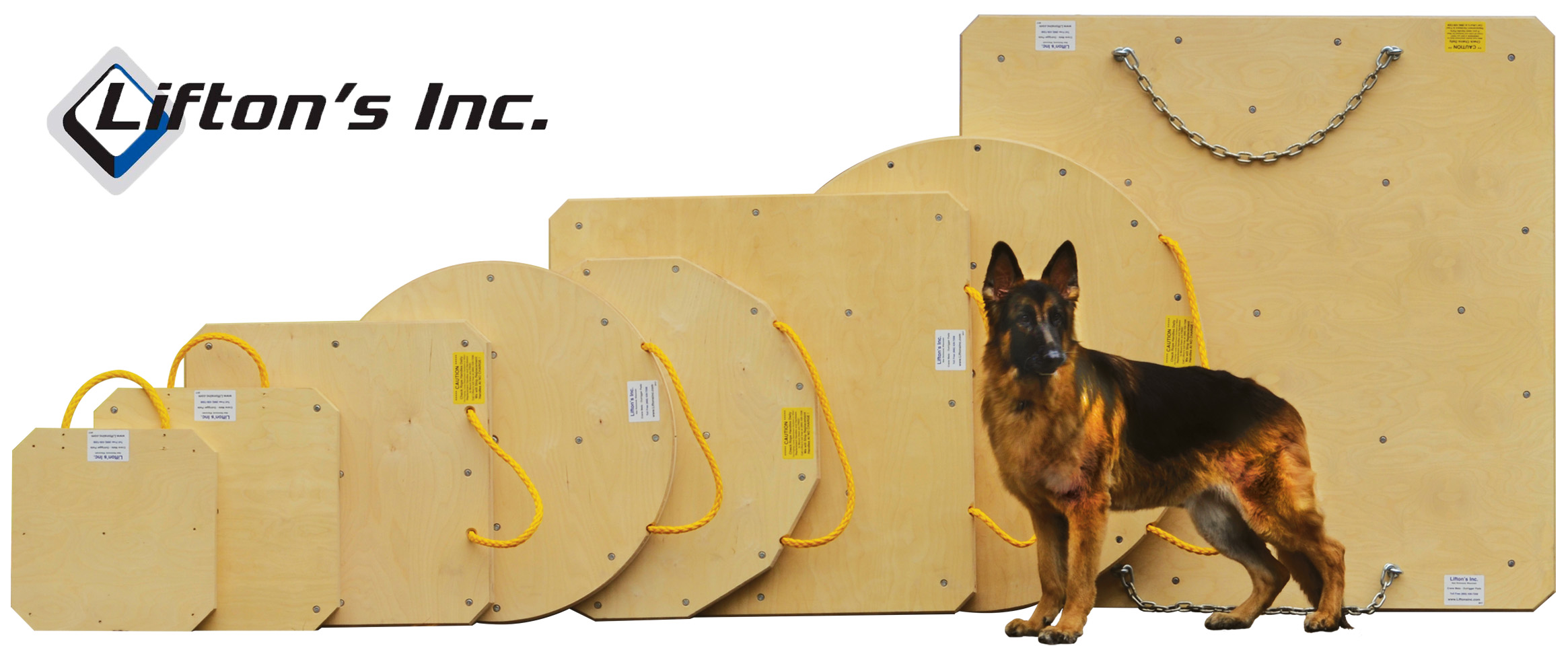Rough Mix
Rough Mix
SOONER OR LATER everyone that pumps concrete will encounter a mix problem. This can be the result of a number of variables that are a factor in the design or batching of a particular load that backs up to your pump. Here we will look at the possibilities and some of the ways to deal with a rough mix that is making your day harder than it should be.
First, we have to define “rough mix”. That would be any mix that does not have the proper components in the proper proportions for pumping. It was only a few years ago that this range of concrete mixes was pretty small. Now, we have as many different mix designs as we do pump models, even more. Chances were that no matter where in the country or what you were trying to do, you would come across a mix that would not pump. 20 years ago, we did not know as much about mix design as we do today and the pumps were similar to the same pumps that roamed the earth 30 years prior. Nothing had changed much and we were still batching mud the same way. When I started in the 70’s, we as pumpers would call in a mix design. It was rare that you would see 3000lb or 5000lb type 5 or other different mix designs. Concrete was concrete pretty much. We have come along way since then. Our pumps have gone from 80yph booms to 260yph booms that reach into the next zip code. Before we had pumps that were operated with levers to turn it off or on and simple remote boxes that only moved the boom and they were all b/w with out wireless. There was no need for wireless as the booms were only 75’ long and those were impressive! The mud was plain scary looking stuff with more rocks than anything else. Often the batch plant had 2 designs, a chute mix and a pump mix. The difference was the amount of rock and sometimes the size. It was believed for many years that a pump mix was weaker because it had to be batched with less large aggregate and more sand. Maybe it was back then, maybe we did not know as much as we do today either. We have learned over the years that a pump mix will be a better product because it will have a better gradation and maybe even a little more cement and the mixing will be better. With the quality of the pumps in production today and the advances in valve design there are not too many mix designs that are classified as “unpumpable”. The trick is to use the appropriate pump for the mix that is in the rough mix category. We used to have a choice of gate valves or flappers of some sort. Flappers were ok in some configurations for typical mixes, there being several types that worked in different ways to block or expose a discharge path for the mud to flow through by a swinging valve or plate. That was a big part of the problem with flappers, they were dependant on the mud's ability to flow to some extent as they had major reshaping of the material as it flowed through the different passages en-route to the pipeline and the valve had to swing through the mud. Often a round cylinder sucked mud from a square hopper port then it would pass through a rectangular valve box into a square to round discharge port that reduced to the pipeline. A nice mix that flowed well would make all these transitions ok, but put a “rough mix” in there and it would choke every time. The alternative was a gate valve that was a plate that would slide from side to side to close off or open the hopper or discharge port. This valve “chopped” its way through the mix. The mud did not go through several transitions to find the pipeline, It just fell through the gate into the cylinder and from there only had to reduce to find the exit. This design was much better for a mix that did not flow well since gravity did most of the work as far as loading the cylinders with the gates on the bottom of the hopper allowing the mud to fall into a cylinder. The real trick to a gate valve was the reducer. Loading the cylinder was the easy part. Pushing the stuff was much more challenging. The big advantage came in the form of the reducer, the best ones were elbows that were long and reduced as they bent. mud mixes as it goes through an elbow, we know that. as it reduces it tends to bind or lock up because of the poor flowability of a mix, it could be almost impossible to make it reduce, this requiring the rock to be able to slip and slide and “find” a path to exit. the solution was so simple, a reducing elbow. the longer the better. this gave the mud the way to mix and reduce at the same time. it worked very well but the gate valve had its drawbacks also. they were as tight as a drum when new, being able to pump water. after a few thousand yards the edges would start to wear down as the gates were constantly chopping thier way through the harshest of rocky mixes. soon they would be so worn that they might have a 1/2” gap in the sides of each gate that would prohibit a seal tight enough to pump pea gravel or slurry. many a pour failed because the pump could not prime the slurry into the boom, it would be easier for the watery slurry to be squeezed back past the gates than to be pushed up the boom. the only way to make it work was to add some of the regular mix with the rocks to seal the valve and then it would pump it fine. you also had rock going right up front and the slurry was nearly useless. there was also the problem of the loose valve under high pressure squeezing out the fines (fine sand and ash/ cement particles) and water during the passage of the mix through the valve. if there was a way to escape the higher pressure of the pipeline, the fines would get squeezed out past the valve gap back into the hopper resulting in rock or dry packs in or near the valve. there was no good answer to the problem, only a continuing effort of identifying the exact problem and finding a way to correct the mix problem so that a pour could be finished. the mix was the only thing that could be adjusted since the pumps were the way they were and little that could be done about that. as we battled the way things were, the factories were watching and learning also. the redi-mix industry was paying attention too. they did not make a dime if all their trucks were sitting on a site that was going nowhere. now we are working with the fruit of those labors, major advances in pumping technology and a fine tuning of mix design that could only come from many, many bad days and much research on the subject. a huge variety of add-mixtures that can change the properties of any mix and allow for many of the problems of the past to be avoided completely. we all have come along way in the concrete pumping industry, material suppliers and pumpers alike.
now we have a variety of “swing tube” type valves for pumping. these are all pretty much alike in the fact that they are a tube that swings from one cylinder to the other. the mud is never in transition and is always lined up with the exit into the discharge elbow which now always reduces as it heads for the deck pipe. this valve solved many problems with a positive seal that when in good condition will pump air and even when worn will pump water or slurry. this tube type valve also has more of a chance of shifting through a rocky mix since it is actually a part of the pipeline and not just a transition area that must fight the mix to shift.
They are powerful and strong, with a life of several years and can be hard surfaced for extended life. tubes have wear parts on either end that are easy to replace and adjust. many have no adjustment, just change the wear surfaces after 50k yards and keep going. i have seen a partial rebuild with mud in the boom. its that easy. these new generation valves are the result of all the experiments of the past with the ability to do what no single design could do before, this one valve can do it all. great wear, rough mix ability, positive sealing for thin slurry mixes, everything. the tube rules concrete pumping.
Now we can look at “rough mix” and learn what makes it rough. there are several classes or reasons to label a mix as rough, each having a different solution when the problem arrives at your hopper.
1. Aggregate quantity
There are only so many people that you can stuff into a room. too many and no one can move. concrete is exactly the same way. it must be able to move around, the rocks especially. as the mix is being pushed through the pipe line, it must have the ability to change shape, this is called “plasticity”. when there is too much rock in a mix, it looses the ability to flow and change shape as it must do to even make it through an elbow. the rock must be suspended in the remaining ingredients and retain this plasticity to pump well.
2. Aggregate size.
Take that same room and put less people in it, just make them all twice as big as before. same problem. again, the rock must be suspended in the mix to pump. if it is not, it will pack together and lock up, a rock pack is the common name for this condition.
A rule of thumb that i employ is that the pipe line must be at least 3 times the size of the largest aggregate. more if it is an unusually heavy mix with extra aggregate for some high strength applications. the rocks like the people must have room to move.
3. Gradation.
This is the variance in the sizes of the different solids in the mix. in order for a mix to have good flow characteristics it must have some of several different size rock and sand. this prevents gaps between the rocks that can only be filled with cement paste and that will be squeezed out under pressure leaving a rock pack of another type. when there are some large size rocks with some of the next size down and even another step down, the mix will have a ball bearing effect with the rock as it is moving in the pipeline. with no gaps between the rocks,and the smaller rock to act as a filler, they are forced to remain together and able to move with the coating of slurry to suspend them and carry them through. this will have excellent flowability and the mix will not separate or bind as would a mix that was made of only a single size rock. it makes a better, stronger mix also with more aggregate to create strength and less sand to weaken the mix. gaps that are filled with only sand or mortar are subject to cracking and will have less tensile strength simply because the rock is harder and supplies 99% of the total strength. all the cement and sand is in a mix is a binder to hold it all together. the glue in other words. sand gradation is equally important because it will control the way the water is held with the cement. too coarse of sand will allow the water to “bleed” through the sand leaving “dry packs” where all lubrication has been lost. sand too fine will not support the heavy aggregate and result in a mix that seperates easily.
There should be a good blend of sand in any concrete mix. this insures the quality of the product regardless of it being a chute mix or a pump mix. in pumping however, gradation is everything. without good gradation, you have nothing. nothing that you can pump anyway.
4. Coarse aggregates and sand
This is where it takes seeing it to believe it. a mix design can look beautiful on paper with a ton of cement and good rock/sand ratio and be a bitch to pump. why? crushed aggregates and manufactured sand. the stuff we all love to pump is river rock, like ball bearings or marbles, it will pump great with not too many ways to screw up. it flows all too well and won’t bind when reducing because of the ability to slip against itself. a good river rock mix will be tough to get a low slump out of it simply because it is so flowable. it won’t stack easily when the slump cone is pulled. river rock is great to pump. some say it won’t produce as good of a product because it is round and has slightly less bonding ability due to the round, smooth surface. it’s also becoming harder to find for batching and more expensive. what we will more than likely see is a quarried rock that has been blasted out and then crushed to size. depending on the type of rock, it may be fine to pump with a smooth surface and a few facets like a gem stone. that’s ok. what we fear is the crushed rock that has sharp edges and many of them. take a single rock and break it in half. now you have 2 rocks with more surface area and edges that weigh the same as the origanal rock. break the 2 again. now you have even more edges and surface with the exact same weight. what does this mean? it means that there is several times the edge and surface to be coated with the slurry in a mix with the same weight. this is more difficult because we have not increased the other elements like cement or water or sand, we just increased the number of surfaces to coat in a mix, or we did the same thing as removing some of the slurry. this stuff will bind and plug like it was designed to do so. it must be in a heavy slurry(rich mix) and it should have better gradation than other aggregates in order to pump it with any success. many of these aggregates are of a super hard rock like granite that will have the extremely sharp edges that will accelerate the wear on your pump 10 fold. if not batched properly, there is going to be a lot of effort to pump this stuff. the machine will have to work harder to push it as the mix may be ok in general but the rock constantly tries to bind and plug. i have pumped a lean crushed granite mix that had some iron ore mixed in that was 2 strokes forward and 1 back all day. it takes awhile to do 500 yds that way. the only thing that can be done when you meet a mix like this is to keep it as dry as possible so that the supporting slurry will carry the coarse rock as best it can. the wetter it is the more it will be free to move around in a thinned slurry and then it binds. this is a situatiuon where you don’t want the mix real wet and flowable, it will only plug as it is able to bind with the thinner slurry. the many surfaces and edges cause this and the only answer is thick slurry or a dryer slump. this stuff can be wetted up alot and still get a low slump because it binds so well that it almost stands up when the cone is pulled. the same mix design with a river rock may slump at a 6 and the crushed rock may come out a 3 because of the type of rock and its surface. actually the crushed rock is pretty common and we pump it alot but it is only because the batch plants have it down to a science as far as what weights can be pumped and what additives are required. the crushed rock makes an excellent product because of the rough and sharp surface that has more area and more edges to bond with the mix. and it is naturally hard too. it will also eat your wear parts alive being sharp and hard. the mix that i mentioned earlier that was constantly a couple strokes in reverse was so course that it would destroy a new hard surfaced 6” elbow on the rear end in under 1000 yds. damn hard to pump and even harder to understand why i was there trying ! river rock can be pumped as wet as you want since it is a smoother and more naturally slippery rock. the crushed rock has its limits due to the fact that it cannot slide around as well so it should be pumped dryer just so it can be pumped. you really don’t have many options here. sand is the same way. a blend of course and fine is what we need. that is expensive and more difficult to find lately. so we are now grinding our own sand, manufactured sand we call it. often it is the remains of some structure that was demolished and had the old concrete ground to make more sand. sometimes it will be the chips of the hard rock, like the granite that is too small for aggregate use so it is ground into a sand like size and used as sand. again, we need the blend. we can pump manufactured sand ok if the plant throws some fine into the pot also. we have the blend. sometimes we only get the made sand and it can be tough to pump for the same reasons as the crushed rock. with no or little fines to block and fill the smallest voids in a mix, water will bleed out and through the mix as you are trying to pump it. as pressure is applied to the mix, the water will be squeezed out and plugs will occur where ever it happens. with this stuff the only advise is to take it easy. baby it through. the higher the line pressure the more the bleeding. whenever you stop, reverse the pump a couple strokes to eliminate the head pressure. this will minimize the bleeding also. i have seen a mix that was so course in sand and rock that when stopped you could see a gyser of water coming up in the hopper.
Watch that for a few minutes and see if the pump will start in forward. not! it has bled off to the point that there is no wet material in the rear end or the boom. don’t risk it, suck it back a little. this mix with the man made sand can benefit from fly ash. the ash will help hold water and act as a fine to better the gradation of the sand. cement is always welcome too. wet or dry this stuff will be a problem. if too dry, it will be abrasive as hell and try to bind and plug as the crushed rock will do. too wet and it will bleed off leaving dry packs where ever there is a place for the water to go. fine sand added or more powder is the only real solution here, either ash or cement. 5. absorbant aggregates. these can be difficult sometimes because they will soak up the water in the mix and while under pressure in the line, suddenly the mix becomes much dryer sometimes causing dry packs. it does not actually become dryer, the water is still there, it is now inside the rock. being forced there from the pressure of your pump. a 6” slump may reduce to a 3 or 4” slump by the time it hits the tip hose. a long push can be a battle with trying to estimate the slump needed in the hopper that will give a satisfactory slump at the point of placement. artificial aggregates like heidite (liteweight) are good for this. this stuff is 100% man made from a clay that is extruded, chopped, flash fried and then batched. hopefully the batch plant went through the process of pre-soaking the stone or it will not pump. i don’t care how badass or how mean your new pump is, if the liteweight was not soaked, it ain’t gonna happen. when pumping liteweight, notice how much of the rock will actually float in the hopper. it is like pop-corn with millions of microscopic voids in each stone. after cooking some develope a ceramic like glaze that can prevent the stone from absorbing water no matter how well it is soaked. the good stuff has a rough surface with no glaze and will easily absorb water and retain the moisture. when soaked properly, it will double in weight. you can tell how well it has been soaked if there is a problem pumping the mix by taking a piece of the stone and breaking it open. if soaked well, the center should be dark. if not, the center will be light in color and a noticeable difference between the exterior and interior color. there are several methods of soaking this stone that work well. the plants used to simply put a sprinkler on the stock pile for a day before the pour. this was a hit and miss method that always yielded loads that were unpumpable due to the fact that water runs to the bottom of the pile and some stone may never come in contact with the water at all. some stone as i was saying before may have a glaze and water will just run off its exterior. the best method is vacuum soaking. the stone is placed in a chamber and sealed in. a vacuum is them placed in the chamber. when this is acomplished, water is injected into the chamber where the thirsty stone will suck it into itself. some have a reverse method that involves a pressurized chamber to force water inside the liteweight stone. as long as the stone is saturated with water, no body really cares how it was done, as long as it was done. if it wasn’t, you’ll be the first to know. another aggregate that will absorb the mix water is limestone. there are several grades of limestone that will all absorb some water, the harder the grade the less it will suck up during pumping. the softer variety will act like the liteweight and it will even pulverize under extreme pressures. although presoaking does not help limestone as much as liteweight, it certainly won’t hurt it. limestone is also a dusty or dirty aggregate that handling will create more of this dust which will absorb more water.
Many plants and engineers are backing away from these soft aggregates because they lack the strength for a good product and the fact that they still must be quarried. certain parts of the country have a limestone that is plenty hard, but it still is dusty and course. it will absorb the water and be difficult to pump because of this. this is a mix that should not be pounded on, as it will create some mean plugs in your boom. ease it through with some skill and work with the forward and reverse to free the simple plugs before they become stubborn plugs.
How to deal with the rough mix
Now that we are probably running a tube valve, ( a rok, s, or one of many others that are all tubes) there are ways to deal with the ugly mixes that will come your way. knowing what you now know from the preceding portions of this article, you can understand what is happening with the different types of rough mix. first you must identify the problem. lets say we have a tough load that has too much rock, poor gradation. so much rock that a hopper full has gaps all the way to the bottom, little or no slurry, just grout colored rocks. looks scary doesn’t it? fear not, it can be pumped if nessacary. always see if you can avoid pushing this junk into the boom. sometimes the customer will demand that you try. sometimes the whole pour is going to be this same stuff. if you just got to do it, here’s how. first of all, see if its an isolated load. just a bad load and the others are probably going to be fine. if so, blend it with a good load. even if you must use 2 or 3 good loads to be able to unload the single bad one, do it that way if it must be used. if they all are going to be this ugly, read on. in a tube there is space. when there is too much rock, it cannot move within the mix. no room to move or slide around. remember the room full of people? can’t move. what if we made the room bigger? we have room now.it’s the same as removing some of the contents. it is still the same way in a valve. we cannot make it bigger, but we can limit how much we put in it thus providing more room for what is in there. we do this by allowing the pump to suck a little air each stroke. when we do this, we are only pushing part of a stroke in the rear end leaving some room for the material to shift around and move. so it can find its path out. we will not pump 200 yds per hour this way but we will be pumping. the problem is not the power needed to push the stuff, it is slippery with slurry and it will push once it has established a path in the rear end toward the pipeline exit. the problem is the reduction and transition area. it cannot move against itself, it has real poor flowability or as some refere to this as “plasticity“. it will bind as it tries to reduce. we allow the gap in each stroke with a little air ( a void actually) and this will give ample area for the mix to move and find a home. once it has reduced it will be fine. this is easy to do and does not require a lot of pressure or beating up of the machine. go easy and keep the barrels exposed as you pump. the hardest part is convincing the redi-mix drivers that they won’t get dirty by letting the hopper run low. today you want it low. it will work. try it. as long as there is sufficient slurry to thoroughly coat the aggregate this method will work. if you have any doubt as to the cement content, better try something else. there must be enough cement in any mix good or bad. that’s what makes it slide through a pipe. if you can see the color of the rock or see sand that has not been coated, you will be flirting with disaster pushing this into the boom. you not only have a mix that won’t reduce, you also have a mix that has no lubrication and that we need for the boompipe.
A crap mix will go through the boom if it has made it past the first obsticle which is the rear end reduction and it has enough slurry for the aggregate to be lubricated. if its lean and too rocky also, the boom is only another place to plug in and you most likely will. the worst of it is that with a mix that has little or no lubrication, you will have as much trouble reversing as trying forward. it won’t slide well in either direction. now you’re screwed. the ability to pull the mud back and work it is about 99% of your safety net as far as pumping rough mix. if you loose that ability go ahead and get the tools out and be ready to open the boom somewhere and clean it out the hard way.
Difficulty due to bleeding.
If a mix has a sand problem such as no fines, it can still be pumped easily. actually its not the pumping that will cause you problems, it’s the stopping and starting. there is probably enough cement and plenty of water but if there is no fine sand to fill the gap between the course sand and the ultra fines ( cement and ash), every time you stop the pressure of the concrete in the boom pipe, especially the up sections will literally squeeze the water out of the mud. it will all run through the mix in the boom between the large sand particles and end up where ever it has a place to escape, often the hopper or rear end. imagine a box of rocks with openings in the bottom of the box. try to fill the box with water. can’t be done can it? that is because there is nothing to stop the water from running past the rocks or the gaps in between. the concrete in the boom is exactly the same, just a little smaller gaps. without the fine sand particles to fill the voids, even the size of a grain of sand, water will run through quickly.
I have seen a boom plug the instant the pump was shut off. as long as it was pumping it was ok, the mud always moving so the water had no chance to escape. again, there is a way. when you encounter this problem, identify the sand and the lack of fines as the source of the problem. if the mix looks very gritty and course, pay attention to it. if you start pumping and the first time that you stop for 2 minutes and water appears on top of everything in the hopper, beware. if you sit too long it can possibly leave you with a whole boom full of bled off mix, same as a mix that is too lean, no lubrication, no pumping! if this is what’s happening, it’s simple. you know it’s the head pressure that causes or at least contributes to the problem, so relieve the pressure. when it is time to stop for a minute, reverse the pump 2 or 3 strokes at least before sitting. this will pull some mud back and lighten the load on what remains reducing the head pressure. if you have a bleeder mix you may notice that it may pump fine and no snags when the boom is stretched out flat. less head pressure is why. as soon as you are booming in and you have sections up again, the trouble starts. increased head pressure from the up sections and gravity doing rest. maybe even run a stroke back as you start to go forward again. sometimes you may get a mix that gives you trouble in forward all day. i cannot simply say to pump it wetter or dryer as each mix and each pour is different. one such mix may benefit from another 10 gallons where the next mix design might get worse with additional water. rule of thumb though, if it is a leaner mix, say 2500lb for example, leave it stiff. if you thin this already lean mud with water and it bleeds off, it won’t leave you with much to work with. generally a richer mix will afford you a little more water to work with. with more cement you will have a better chance of keeping some moisture in the boom where you really need it. the cement itself will retain a certain amount of water and will stay slick even after the majority of the water has bled off. a rich mix also will not bled as fast because the cement tends to help fill the gap where fine sand should be.
With this information you now have the tools to work with the impossible. there will come a day when the loads simply won’t pump, understanding why is the key. with the various ingredients in a contemporary mix there are plenty of ways for a mix to go bad and as many ways to work with it. many people do this every day with the material in their area being naturally course or crushed. what i pumped in the gulf coast daily would scare the hell out of the best west coast operator and what we call a rough mix in some areas, others would call grout. knowing how to deal with it no matter where you are is important because it will raise your value as a pumper to your employer and your customers. i know that in most areas we as pumpers cannot adjust a mix as we did 20 years ago, but we can work with the plant to make those adjustments. usually all that we can do as far as adjusting a mix is with the slump and that has guidelines for each mix design. usually we can work within the mix specifications to achieve a pumpable material since most of the time we will be looking for a dryer mix to better utilize limited cement and lubrication. the only ones that will complain about that are the laborers who have to shovel the stuff !
Remember to read the ticket, know what it is suppose to be, notice the general appearance of the mud, creamy, course, gritty or runny. you may stop a problem before it happens and at least you will be prepared having a warning by way of observing what is coming down the chute.
Use your experience to work with the mud, don’t force it to go, convince it to go through your pump. work it, don’t beat it. when you run into an unpumpable mix, don’t be afraid to experiment a little, especially if you already have a boom full. Try something, you may be surprised (you could be screwed too, use caution). At this point you really don’t have much to loose. As long as you never beat a mix too much and break something, this is a great way to do some research and learn something that cannot be taught, it must be experienced and once a rough mix has been conquered, you will have the confidence to do anything. Now go find something really raunchy and put it your pump. You’ll figure it out, you will have to!
Written By Horton, Lee Published by ConcretePumping.com




















.jpg)
.gif)

.jpg)








.jpg)









